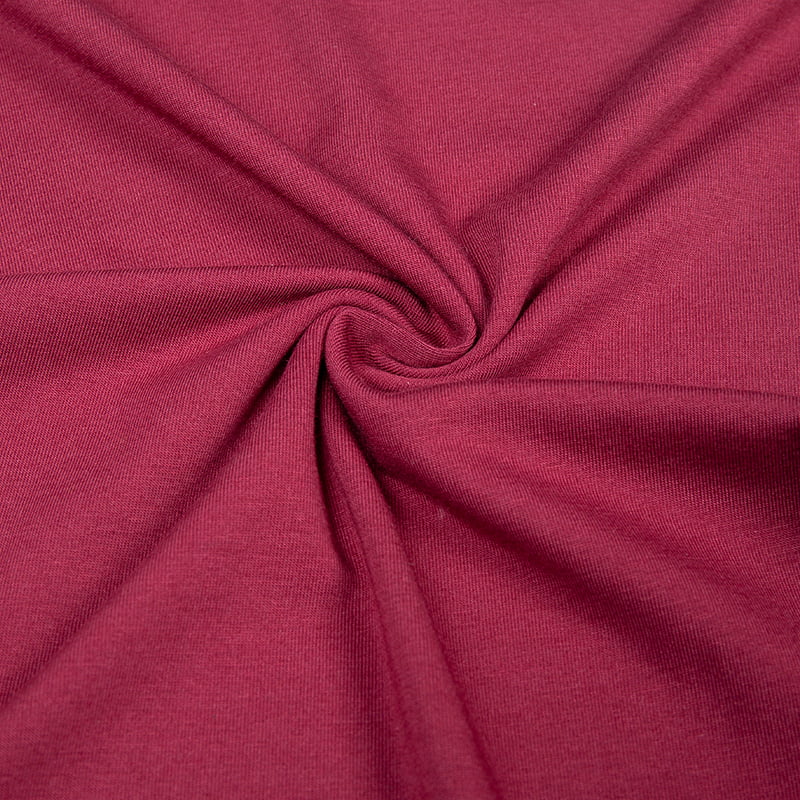
Jersey knitted fabric is known for its elasticity and drape while maintaining its shape and resisting deformation. Several factors contribute to these qualities in Jersey fabric:
1. Knitting Structure: Jersey fabric is constructed using a single-knit structure, where each row of loops is produced by a single set of needles. This construction allows the fabric to stretch in both the horizontal (crosswise) and vertical (lengthwise) directions, providing elasticity without compromising its shape. The loops in a Jersey knit are interconnected, enabling them to expand and contract with ease.
2. Fabric Composition: The choice of fiber content and yarn type plays a crucial role in Jersey fabric's elasticity and drape. Commonly used fibers, such as cotton, polyester, viscose, and blends, can contribute to varying levels of stretch and drape. Elastane (spandex or Lycra) is often added to Jersey fabric blends to enhance its elasticity while maintaining its shape.
3. Yarn Properties: The thickness (denier) and twist of the yarns used in Jersey knitting impact the fabric's stretch and recovery. Fine and tightly twisted yarns enhance elasticity and help the fabric bounce back to its original shape after stretching.
4. Stitch Density: Jersey knitted fabric can be produced with different stitch densities, meaning the number of stitches per inch. Higher stitch densities can result in a more stable and less stretchy fabric, while lower densities contribute to greater stretch. Manufacturers can adjust the stitch density to achieve the desired balance of elasticity and drape for a specific application.

5. Weight and Gauge: The weight of Jersey fabric (measured in grams per square meter or ounces per square yard) can influence its elasticity and drape. Lighter-weight Jerseys tend to be more stretchy and have a softer drape, while heavier weights offer more structure and less stretch.
6. Fabric Finish: Some Jersey fabrics undergo finishing processes that enhance their elasticity and drape. For instance, fabric treatments like bio-polishing or silicon washing can improve the fabric's softness, stretchability, and drape.
7. Weave and Fiber Blending: Jersey fabric can be modified by blending different fibers or employing variations in the knitting process. For example, modal or Tencel fibers blended with cotton can enhance the fabric's drape and softness.
8. Knitting Machine and Tension Control: The type of knitting machine used and precise tension control during the knitting process are critical factors in achieving the desired elasticity and drape in Jersey fabric. Skilled machine operators can adjust settings to optimize these characteristics.
9. Proper Laundering: Proper care and laundering practices can help maintain the fabric's elasticity and drape over time. Avoid excessive heat during washing and drying, as high temperatures can affect the fabric's elasticity and shape.
Jersey knitted fabric ensures elasticity and drape without deformation through a combination of its knitting structure, fiber composition, yarn properties, stitch density, weight, and finishing treatments. These factors are carefully balanced to create a fabric that can stretch comfortably while returning to its original shape and maintaining its drape, making it a popular choice for a wide range of apparel items.


 English
English 中文简体
中文简体











